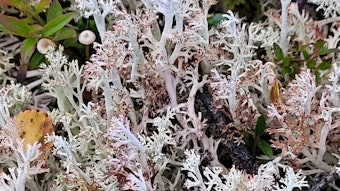Metal oxides with a wide band gap absorb and reflect UV energy from the sun. Such metal oxides include the broadly-utilized TiO2 and zinc oxide (ZnO). These metal oxides are often used as UV filters in the cosmetics industry, and as pigments and fillers in applications such as polymer processing, coatings and adhesives. Their photocatalytic capabilities also are used in photovoltaic, antibacterial, water treatment, air purification and self-cleaning applications.
Photocatalytic reactions derived from these metal oxides normally lead to the decomposition of the organic materials with which they come into contact. This photoactive reactivity results in the generation of singlet oxygen1 and other reactive oxygen species (ROS).2-4 Such consequences are not desired in personal care or industrial applications, so to alleviate these unwanted reactions, surface modifications are made to the metal oxides. However, currently available treatments do not completely eliminate the photoreactivity of these metal oxides; some of these surface treatments are provided in the product literature of major metal oxide suppliers for the personal care industry.5, 6
TiO2 and ZnO therefore need improved protection to eliminate their adverse effects in personal care and industrial applications, in turn making them safer and more effective UV filters. In relation, propenoic acid derivatives are known to form interacting complexes with Lewis acid species such as TiO2.7-10 In this study, the authors evaluate a member of the propenoic acid ester family—a 2-ethylhexyl ester of 2-cyano-3-(4-methoxyphenyl)-3-phenyl-2-propenoic acid (EHCMPPPa)—for its potential to safeguard TiO2 in cosmetic applications.
EHCMPPP
EHCMPPP is a specially designed ester based on the propenoic unsaturated structure (see Figure 1). Suitable substituted aromatic structures were placed onto the propenoic double bond to impart appropriate photochemistry and photophysical properties. These aromatically substituted propenoic esters are known to form chelating complexes with inorganic oxides.7-10 The interactions between EHCMPPP with common metal oxides such as TiO2 and ZnO were therefore explored in this study.
Materials and Methods
Materials: TiO2b and butyl methoxydibenzoylmethanec (BMDBM or avobenzone) were obtained for the described tests. TiO2 levels of between 2-4% were evaluated and the same trends in performance were observed. Thus, results of the 4% TiO2 are reported here; note that 5% and higher levels were not evaluated due to their whitening effects on the skin. The test substance, EHCMPPP, was created internally. Solvents used in the high-performance liquid chromatography (HPLC) studies, described later, were HPLC-grade. Other ingredients used to prepare test formulas were obtained from well-known cosmetic raw material suppliers.
Test formulas and procedure: The test vehicles for this study were BMDBM-containing, o/w emulsion-based lotions, evaluated with and without TiO2, and with and without EHCMPPP (see Table 1). The test lotions were applied to roughened quartz platesd at a dose of 40 mg/25 cm2 prior to irradiation. The decomposition of BMDBM in the EHCMPPP-free test vehicles, with and without TiO2, were analyzed quantitatively after 10 MED of irradiation in a xenon test chamber over a 2-hr period, with light output filtered to approximate direct sunlighte; 10 MED is roughly equivalent to a 2-hr exposure of midday, midsummer sun.
Irradiated sample materials were extracted using approximately 3 mL of acetonitrile to rinse each plate. The eluted material was mixed well and passed through a polytetrafluoroethylene (PTFE) filter before being subjected to HPLC analysisf-j (see Table 2). The amount of the BMDBM remaining was determined by comparing its peak area at 358 nm to the internal standard C12-15 alkyl benzoate at 230 nm. Chromatographic separation conditions included: a flow rate of 1.0 mL/min, a column temperature of 35°C, and an injection of 8 μL. As noted, C12-15 alkyl benzoate served as the internal standard and BMDBM acted as the marker.
Results
Following irradiation, the EHCMPPP-free test lotions containing 1% BMDBM, with and without TiO2, exhibited significant differences in the photodecomposition products, as assessed by HPLC (see Figure 2). While the photoreactions of BMDBM in the absence of TiO2 have been well-studied11 and the photoproducts identified,12 this work is the first known study of BMDBM photochemistry in the presence of TiO2. Further, the degree of decomposition of BMDBM in the EHCMPPP-free test lotion containing 3% BMDBM, with and without TiO2, was measured. In addition to impacting the reaction patterns of BMDBM photodecomposition (see Figure 2), the presence of TiO2 greatly increased the rate of decomposition of BMDBM (see Figure 3).
To the 3% BMDBM test lotion base, 3% EHCMPPP was then added, and the decomposition of BMDBM under the same irradiation conditions was assessed in the presence and absence of TiO2 (see Figure 4). The incorporation of EHCMPPP changed the reactivity of BMDBM such that markedly more BMDBM remained, with or without TiO2 present.
Furthermore, the presence of EHCMPPP showed less decomposition of BMDBM with TiO2 present than without it. Therefore, EHCMPPP-stabilized TiO2 effectively and prevented the decomposition of a known labile compound, BMDBM, under typical sunscreen irradiation conditions. The extent of photostabilization, while marked, was observed to vary somewhat based on a variety of factors, and it is difficult to determine what level of photostability is acceptable. The authors expect additional research to assess and present this in a separate communication.
Discussion
The work presented here shows that EHCMPPP imparts photoprotection to organic materials such as BMDBM in formulations containing TiO2. In relation, additional tests have been performed on a wide variety of commercial TiO2 products; one was neat, many were surface-treated and several were pre-dispersed in oil phases or aqueous phases. In all cases, EHCMPPP produced marked stabilization of BMDBM, the model photolabile organic compound (data not shown). Thus, its effects do not appear to be limited to a singular composition. Also, EHCMPPP is itself known to be very photostable, through the effective dissipation of its excited state energy without causing any structural changes to its chemical nature.13-17
Conclusions
The aim of photostabilization is to eliminate the adverse impact of photolability in intended personal care applications. The adverse effects of photolability derive from a reduction in active ingredient levels and the generation of photoreaction products. The former can make sunscreens less effective as sun protectants, and anti-aging products less effective in maintaining or restoring a youthful appearance. The latter can result in photosensitization, i.e., fragrance photoallergenicity, and oxidative damage from increased levels of ROS.
EHCMPPP-stabilized TiO2 appears to be a better approach for the cosmetic market. This material is one of a family of propenoic acid esters that has been shown to protect metal oxides such as TiO2 from adversely impacting personal care applications. Incorporating such materials with TiO2 makes it a more effective and safer UV filter. This specific benefit may also be broadly, but not universally, utilized in the formulation of more efficacious sunscreens, as the combination of BMDBM and TiO2 is not authorized in the United States. Research continues of the additional benefits of EHCMPPP-stabilized metal oxides for cosmetic applications.
References
- M Buchalska et al, New insight into singlet oxygen generation at surface modified nanocrystalline TiO2—the effect of near-infrared irradiation, Dalton Trans 42 9468–9475 (2013)
- W Macyk, K Szacilowski, G Stochel, M Buchalskaa, J Kuncewicza and P Labuza, Titanium(IV) complexes as direct TiO2 photosensitizers, Coordination Chemistry Reviews 254 2687–2701 (2010)
- A Janczyk, E Krakowska, G Stochel and W Macyk, Singlet oxygen photogeneration at surface modified titanium dioxide, J Am Chem Soc 128 15574-15575 (2006)
- T Daimon, T Hirakawa, M Kitazawa, J Suetake and Y Nosaka, Formation of singlet molecular oxygen associated with the formation of superoxide radicals in aqueous suspensions of TiO2 photocatalysts, Applied Catalysis A: General 340 169–175 (2008)
- www.koboproductsinc.com/Downloads/NYSCC-Avobenzone.pdf (Accessed Jul 16, 2014)
- www.koboproductsinc.com/Downloads/Stabilization-AVO-TiO2-pearls.pdf (Accessed Jul 16, 2014)
- FD Lewis, DK Howard, JD Oxman, AL Upthagrove and SL Quillen, Lewis acid catalysis of photochemical reactions. 6. Selective isomerization of β-furylacrylic and urocanic esters, J Am Chem Soc 108 5964-5968 (1986)
- FD Lewis, DK Howard, SV Barancyk and JD Oxman, Lewis acid catalysis of photochemical reactions. 9. Selective isomerization of conjugated butenoic and dienoic esters, J Am Chem Soc 108 3016-3023 (1986)
- FD Lewis, JD Oxman, LL Gibson, HL Hampsch and SL Quillen, Lewis Acid catalysis of photochemical reactions. 4. Selective isomerization of cinnamic esters, J Am Chem Soc 108 3005-3015 (1986)
- FD Lewis, JE Elbert, AL Upthagrove and PD Hale, Structure and photoisomerization of (E)- and (2)-cinnamamides and their Lewis acid complexes, J Org Chem 56 553-561 (1991)
- W Schwack and T Rudolph, Photochemistry of dibenzoyl methane UVA filters. Part 1, J Photochem Photobiol B 28 229-234 (1995)
- I Karlsson, L Hillerstrom, A Stenfeldt, J Martensson and A Borje, Photodegradation of dibenzoylmethanes: Potential cause of photocontact allergy to sunscreens, Chem Res Toxicol 22 1881-1892 (2009), and references therein
- US Pat 7,597,825, Method of quenching electronic excitation of chromophore-containing organic molecules in photoactive compositions, C Bonda and A Pavlovic, assigned to HallStar Innovations Corp. (Oct 6, 2009)
- US Pat 7,588,702, Method of quenching electronic excitation of chromophore-containing organic molecules in photoactive compositions, C Bonda and A Pavlovic, assigned to HallStar Innovations Corp. (Sep 15, 2009)
- US Pat 7,713,519, Method of quenching electronic excitation of chromophore-containing organic molecules in photoactive compositions, C Bonda and A Pavlovic, assigned to HallStar Innovations Corp. (May 11, 2010)
- US Pat 7,959,834, Alkoxycrylene/metal oxide photostabilized photoactive compositions and methods, C Bonda and A Pavlovic, assigned to HallStar Innovations Corp. (Jun 14, 2011)












